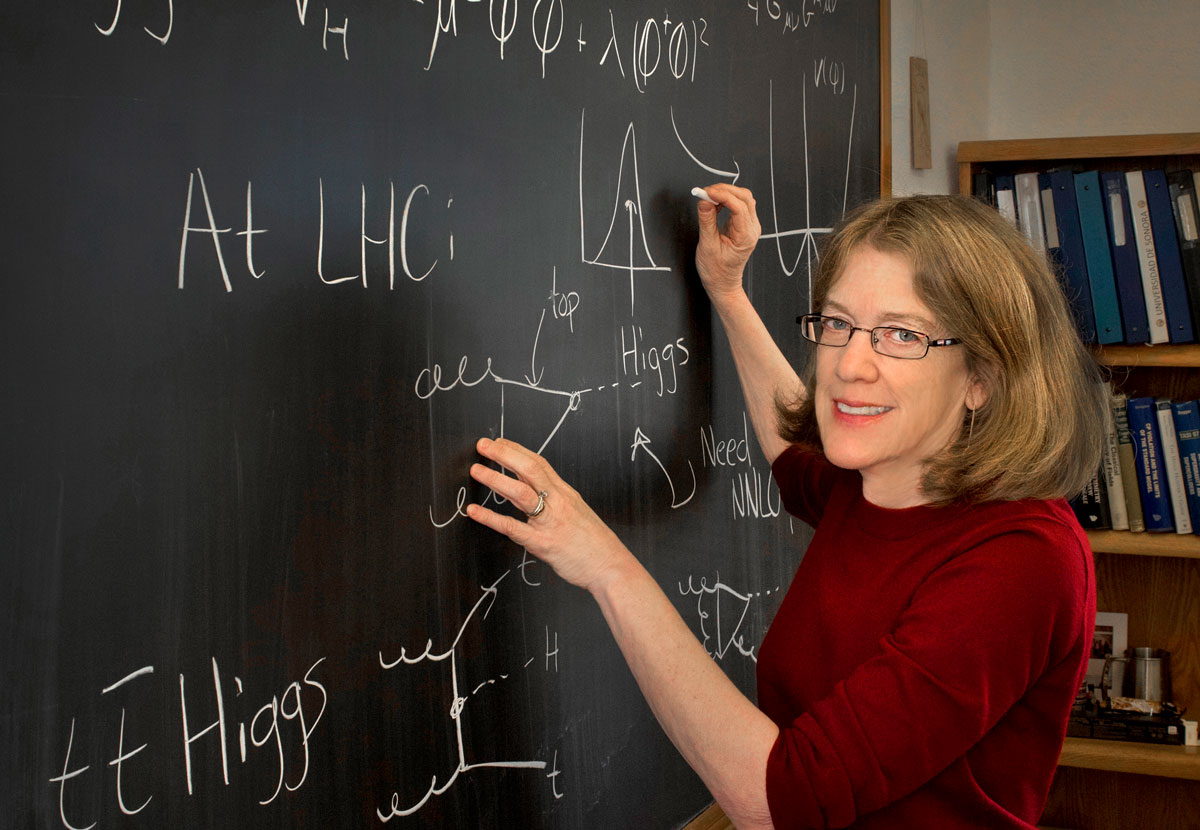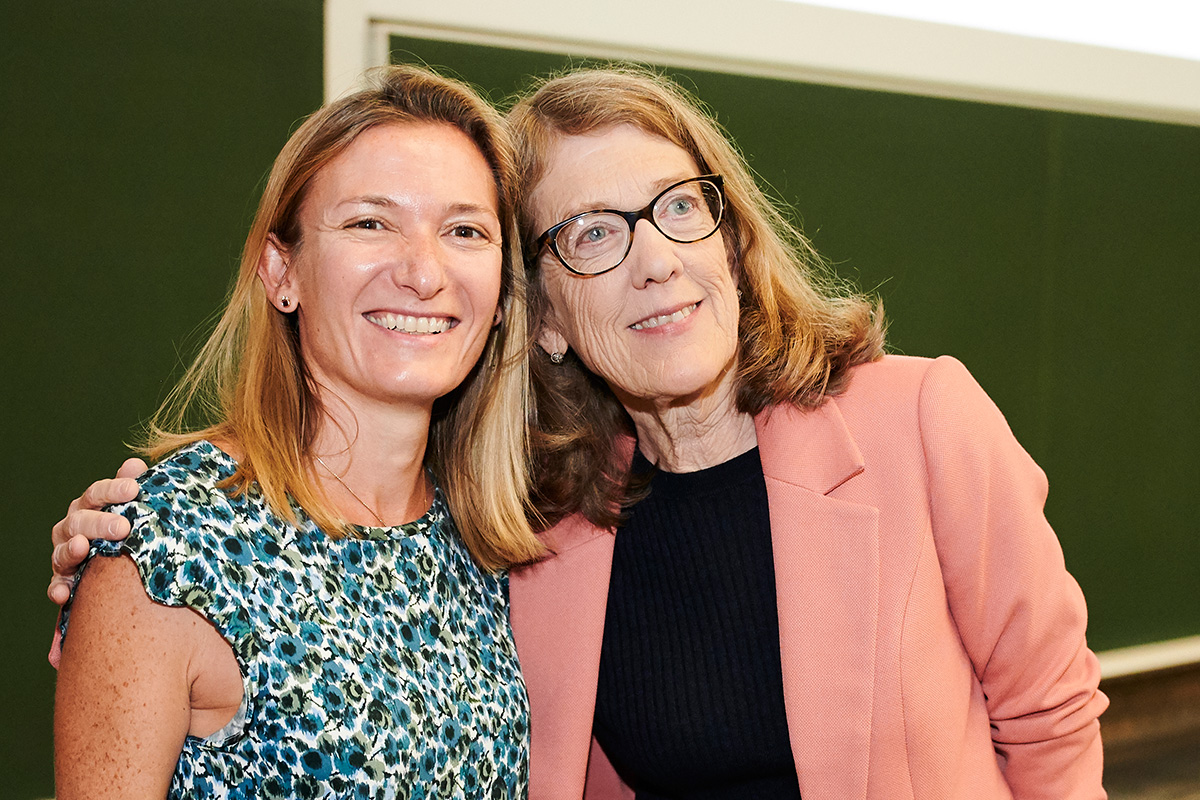Julius Wess-Preis 2018
The Julius Wess Award 2018 was presented to Prof. Dr. Sally Dawson in recognition of her outstanding scientific contributions to the theoretical description and deepened understanding of processes at hadron colliders, in particular regarding the physics of the Higgs boson and the top quark, where her theoretical insights have proven crucial for understanding the properties, reactions and signatures of the Higgs boson. Dr. Sally Dawson is a senior scientist at Brookhaven National Laboratory. Her research focuses on the physics of the Higgs boson and the top quark in the context of hadron collider physics. Her work fundamentally contributed to the development and understanding of theoretical underpinnings of hadron collider physics and, in particular, to the discovery of the Higgs boson and the study of its properties. Dr. Dawson was the first to realize that theoretical predictions for the Higgs boson production in hadron collisions are strongly affected by QCD radiative corrections. She also noticed that the computation of such radiative corrections can be significantly simplified by integrating out the top quark and performing the required computations in an effective field theory where the Higgs boson couples directly to gluons. Currently, this computational technique is the cornerstone of precision calculations in Higgs physics. In 1990 Dr. Dawson and collaborators wrote a book "Higgs Hunter’s Guide" that until now remains the most comprehensive account of the Higgs mechanism in the Standard Model and its possible extensions, and the phenomenology of the Higgs boson.
Dr. Dawson provided detailed QCD studies of the production of a ![]() pair in association with the Higgs boson. This channel is considered to be the primary source of information about the top quark Yukawa coupling. Its extraction from experimental data depends crucially on the work of Dr. Dawson and collaborators.
pair in association with the Higgs boson. This channel is considered to be the primary source of information about the top quark Yukawa coupling. Its extraction from experimental data depends crucially on the work of Dr. Dawson and collaborators.
In collaboration with R.K. Ellis and P. Nason, Dr. Dawson was the first to apply perturbative QCD to describe the production of top quark pairs in hadron collisions. This observation initiated a very successful top quark research program at the Tevatron that included the discovery of the top quark and detailed exploration of its properties. Dr. Dawson developed an approximate method for calculating complicated processes at hadron colliders known as effective W-boson approximation which was a first important step for understanding production rates of some interesting final states at the Tevatron and the LHC.
Dr. Dawson’s outstanding contributions to theoretical particle physics are widely recognized by her peers. She has published 130 papers in refereed journals that received more than twelve thousand citations. Dr. Dawson is a fellow of the American Physical Society and the American Association for the Advancement of Science. She served as the Chair of the Division of Particles and Fields of the American Physical Society in 2004. In 2017 she received the prestigious J.J. Sakurai Prize for Theoretical Particle Physics together with her three co-authors of the "Higgs Hunter’s Guide" for their "instrumental contributions to the theory of the properties, reactions, and signatures of the Higgs boson."
Finally, Dr. Dawson’s deep interests in hadron collider phenomenology and Higgs physics strongly resonate with research directions at both TTP and ITP, making her an excellent candidate for this year's Julius-Wess Award.



